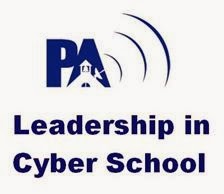Next month 8 students and 5 teachers will be visiting us from Shijiazhuang, Hebie, Province, PRC. I would like to invite people to participate in some of the events. Here is their 5 day schedule. They will be flying in from the first leg of their journey in Shaker Heights, Ohio, and then visit us in the Philadelphia area, and then visit San Francisco, California after which they will fly back home. If you would like to go with us or meet up with us in New York City please contact me on this BLOG.
In the spring of 2011, Pat Parris was commissioned to lead the annual PA Leadership China immersion trip. This four week immersion by 9-12th graders has been going on now for five years. For the past five years, we have purchased the services of Konal Cultural Exchange in Shijiazhuang, Hebie Province, China. Our students would arrive at school every day and complete Mandarin immersion lessons in the morning. In the afternoons, students would complete their cyber lessons back in Pennsylvania. On the weekends, students would tour cultural attractions in Hebie Provence.
There is a problem with this trip. It is not sustainable. Too few students can come up with the $3000 fee. On the trip this year I was able to partner with The Hebie International School in China. We will be receiving students from their school this October and sending students to China in April. This web site is dedicated to this new-found relationship which could potentially cut the expense to $2000. We have signed a cooperation agreement with Hebei International School in Shijiazhuang, China. We are recruiting students with the help of a teacher at their school. The exchange activities will be comprised of shadowing students in their classes as well as educational and cultural excursions.
Tentative Exchange Itinerary: For those traveling from China
| Day | Activity | |||||||||||||||||||||||||||||||||
| Day 1 Sun, Feb. 17th | Arrival at JFK in New York, 1 PM Flight #CA981 Meet with host families at 4 PM at the AIC back parking area |
|||||||||||||||||||||||||||||||||
| Day 2 Mon, Feb. 18th | 7Am – 7 New York City Day Trip / Chinese Exchange Experience!
Total $118.50 . Students are permitted to sit while we ice skate at no charge. Students are permitted to pack two meals instead of pay for one. Students are required to go with us to the observation deck. The deadline for the NYC bus trip is Friday, February 15th. You will be traveling by tour bus with our Chinese guests who will be visiting our school during this time. We are also planning a ping pong tournament at the AIC and CPFA tour on Wednesday February 20th. If you have some ping pong skills you can challenge our guests. If you just want to come hang out to practice your mandarin or just hang out, then please RSVP in this Survey Monkey Here is the permission form for the New York trip. http://locker.palcs.org/~pparris/Global%20Citizens/china/2013%20NYC%20Trip.pdf |
|||||||||||||||||||||||||||||||||
| Day 3 Tues, Feb. 19th | Arrive 8:30 AM – 4 PM at AICAudit Classes at West Chester University
West Chester Tour 9-10:30 AM
3 E Institute 10:30
Lunch 11:30 PM
Dr. Desousa class 12:30 to 1:45
Dr. Hoffman meet 2:00 PM
Rei LI (online class) 3:00 PM
Dr. Cai Jie class 4:15-5:30
|
|||||||||||||||||||||||||||||||||
| Day 4 Wed, Feb. 20th | Briefing at School at 8 AM -8:30 Morning announcements and opening ceremony announcing our guests Shadow students for the rest of the day Participate in an English Math or Science Class English Language lessons in the computer lab Briefing at School at 3:30 – 4 PM Ping Pong Tournament |
|||||||||||||||||||||||||||||||||
| Day 5 Thurs, Feb. 21st. | Arrive 8:30 AM – 4 PM at AICVisit Historic Philadelphia and China Town Independence Mall Franklin Court Liberty Bell Betsy Ross House Elfreth’s Alley China Town Lunch Visit Wharton and The University of Penn. Pack with host family. |
|||||||||||||||||||||||||||||||||
| Day 6 Fri, Feb. 22nd. | Arrive 10:00 AMTravel Day Flight #CA982 leaves from JFK at 3:50 We will leave from the AIC at 10:30 AM. I will be there for drop off by 9:30AM |
| DATE | Tentative schedule | LOCATION | |
| Day 1 |
|
West Chester/JFK Bejing | |
| Day 2 | Visiting Chinese theatre (appearance) 、Tiananmen Square、 The Imperial Palace、 Hutong、toward evening return to shijiazhuang | Bejing | |
| Day 3 |
|
Shijiazhuang | |
| Day 4 |
|
Shijiazhuang | |
| Day 5 |
Students take part in activities with household.
Teachers go to Botanical Garden |
Shijiazhuang | |
| Day 6 | Student take part in activities with household the entire day. | Shijiazhuang | |
| Day 7 |
|
Shijiazhuang | |
| Day 8 |
|
Shijiazhuang | |
| Day 9 | Taiji Quan practice, Learn a handicraft | Shijiazhuang | |
| Day 10 | Introduce food culture | Shijiazhuang | |
| Day 11 |
|
Shijiazhuang | |
| Day 12 |
|
Shijiazhuang | |
| Day 13 | Climbing Cangyan Mountain (taking the lunch) | Shijiazhuang | |
| Day14 | Students take part in activities with their household the entire day. Students pack up their bags. | Shijiazhuang | |
| Day 15 |
|
JFK Airport |


